The Case for Room-Temperature Foods
Some foods are best served straight out of the oven or right from the refrigerator, but there are many dishes and delicacies that benefit from being served at room temperature.
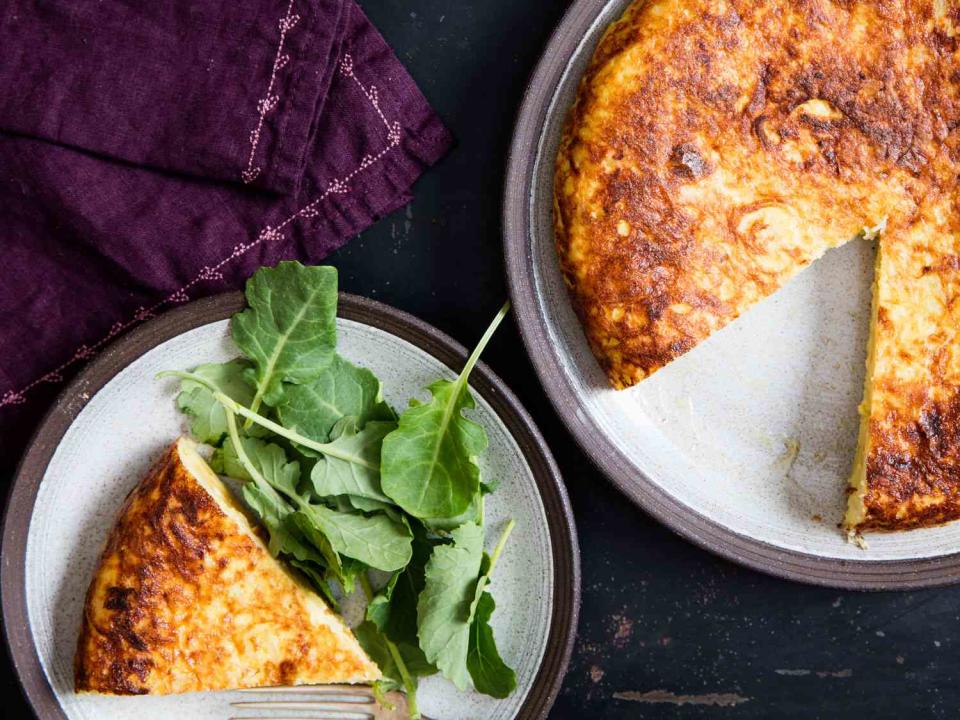
Serious Eats / Vicky Wasik
Like many other Americans, I grew up under the impression that most savory meals ought to be served hot. "Eat before your food gets cold!" is a line I remember hearing not only from anxious TV moms, but also from my own dad once in a while.
Now that I'm all grown up and cooking for myself, the effort it must have taken my parents to get every dish hot off the stove and onto the table at the same time isn't lost on me. But the necessity of doing so is starting to be, since plenty of the foods I enjoy most taste just fine, perhaps better, when they've had a few minutes to cool down—or, alternatively, warm up. And it isn't just me.
As descriptors go, "tepid" is no one's idea of appetizing, and "room-temperature" is an admittedly imprecise designation that's more often attached to ingredients in baking recipes—eggs, butter—than a suggestion for serving. But that ought to change, because, as you may know if you've ever grazed from platters or cooking vessels while washing dishes, room-temperature is often the best way to consume all sorts of foods.
Why Serving Temperature Matters for Flavor
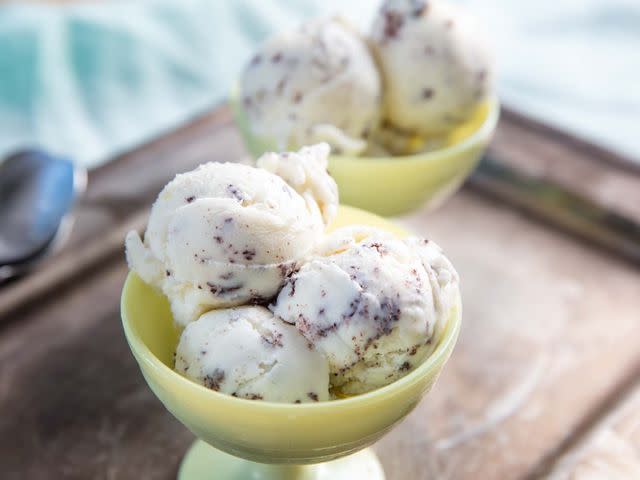
Serious Eats / Vicky Wasik
At Serious Eats, we talk at prodigious length about the chemical and physical reactions that foods undergo during cooking. What we don't discuss as often are the processes that take place once the dish hits the table and people start digging in. You may have sweated away in the kitchen to conjure up an intricate combination of aromas and flavors, but it's all for naught if our noses and taste buds can't perceive them—and smell and taste are both highly sensitive to temperature.
Our tongues can identify five basic tastes—bitter, salty, sour, sweet, and umami. What we know as “flavor” is obviously more nuanced and complex, and can be loosely defined as the combined perception of taste and aroma.
Aroma molecules become more volatile when subjected to heat, which is why bread smells best when fresh out of the oven (and why New York City streets smell most rank in August). As our sense of flavor is inextricably linked to smell, this goes some way toward explaining why heating foods can make them taste better, too.
But it's also a little more complicated than that, and understanding how temperature interacts with taste and flavor will allow you to be more deliberate in how you prepare and serve your food. This topic remains poorly understood in scientific circles, in part due to wide variation in the concentrations of taste compounds in different foods, as well as the inherent subjectivity of taste. Nevertheless, the idea that hot and cold temperatures reduce the intensity at which your tongue perceives taste has gained a fair amount of credence among both academics and laypeople.
A 2007 study by researchers at the University of Leuven in Belgium found that human perception of taste declines at temperatures above 35°C (95°F). Cold temperatures also seem to exert a muffling effect on flavor, whether due simply to reduced volatility of aromatic compounds or to independent factors involving a particular taste receptor that's more excitable at higher temperatures. This is why it pays to splurge on higher-quality chocolate for homemade stracciatella gelato than you would use in, say, brownies, and why even semi-firm and hard cheeses shouldn't be served straight from the fridge.

Serious Eats / Vicky Wasik
What's striking here, at least in the context of the widely cited University of Leuven research, is that the bounds of "hot" and "cold" we're talking about aren't even that hot and cold. The threshold of 95°F isn't as warm as the center of a very rare steak (120°F), or our own body temperature. The authors note that, according to earlier studies, salty, bitter, sweet, and sour stimuli were easiest to detect in foods within a relatively balmy range from 68 to 86°F—colloquially known as room temperature.
Once the threshold is surpassed, the effects of temperature vary, but heading toward the extremes frequently seems to knock the balance of flavors off kilter. Perception of sweetness appears to increase with heat, which is why ice cream, notoriously, tastes overly sweet when melted.* Sourness increases at higher temperatures, while salty flavors may seem more or less pronounced with heat, depending on which of multiple salt receptors in the tongue are activated. Beer turns bitter when warmed from its typical serving temperature; coffee, on the other hand, has been found to taste less bitter when cooled down from piping-hot.
*In line with research showing that warming or cooling certain areas of the tongue can bring about changes in flavor perception, a 2013 study found that participants served ice water experienced diminished ability to sense sweetness, chocolatiness, and creaminess in dark chocolate. The study's authors propose that North Americans' unique preference for ice water may help to explain our predilection for more intensely sweet foods. If we can just tie in SUVs somehow, we may be on our way to developing a master theory of American culture.
Our knowledge about the interplay between heat and flavor remains incomplete, so it's best not to buy too wholeheartedly into any of the above conclusions. But existing research supports the idea that while a steaming-hot pot on the stove may waft tantalizing smells your way and an ice-cold glass may feel divine on a warm brow, neither is guaranteed to be delicious. If you’re the one cooking, always consider not just how you want something to taste, but what temperature you plan to serve it at. Only then can you compensate accordingly for best results.
Why Serving Temperature Matters for Texture
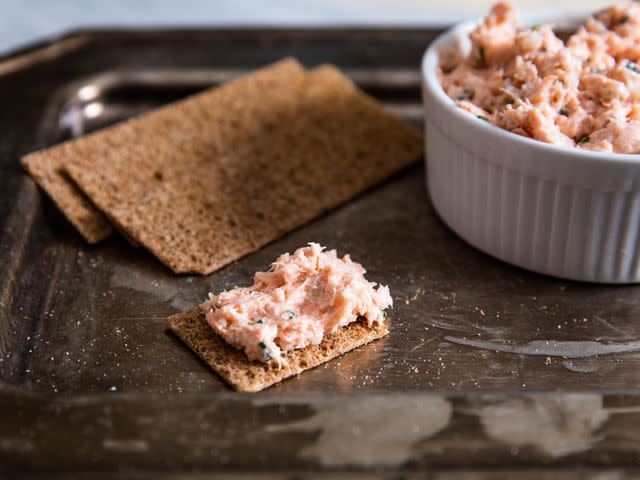
Serious Eats / Vicky Wasik
Salmon rillettes should be served lightly chilled, but not so cold that they can't be easily spread on crackers.The presence of fat, in particular, means that serving temperature makes a huge difference in a food's texture. In most cases, we prefer to consume our fats in a liquid state, which allows them to be dispersed evenly throughout our food, lending flavor and juiciness to each bite. Unsaturated fats, most commonly associated with plant-derived foods, are liquid at room temperature and solidify when chilled. Meanwhile, saturated fats, the kind that exist mostly in animal products, are solid at room temperature and need a higher dose of heat to melt.
We need our lamb chops, burgers, and duck breast to be heated beyond room temp, and remain that hot, not just to ensure that the meat is safe to eat but to warm those fats sufficiently that they liquefy and lubricate every mouthful. The fats in our favorite vegan-friendly dips and spreads, though—think guacamole, peanut butter, and hummus—achieve that desirably luscious state at room temp.
There are exceptions to the above dichotomy. Certain forms of meat, such as charcuterie, are typically served cold enough that the fat remains in a semi-solid state—though even charcuterie and salumi, generally speaking, shouldn't be eaten straight out of the fridge. You'll want your soppressata at a temperature where the fat in it will melt on your tongue, not on the serving tray, and your rillettes should be just warm enough to be spreadable.
Food Safety: An Interlude
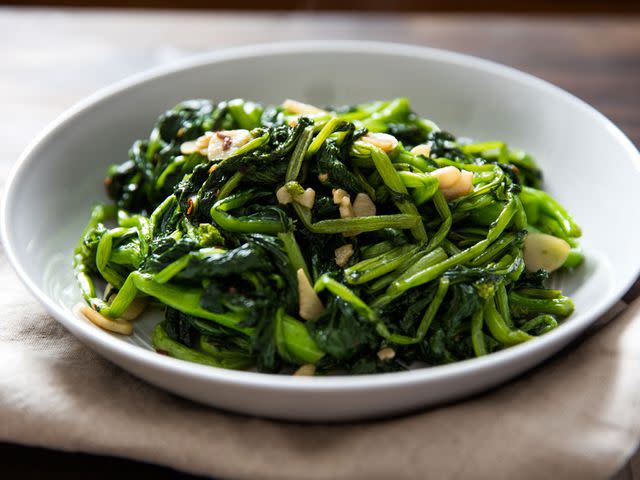
Serious Eats / Vicky Wasik
If you're a regular reader of our guides to sous vide cooking, if you've ever handled food for a living, or if you're just a seasoned and well-informed cook, you likely know that the FDA considers temperatures between 40 and 140°F (4 and 60°C) the "danger zone" for bacterial growth, and thus foodborne illness. The commonly repeated dual mantra in food-safety guidance is "Keep hot foods hot!" and "Keep cold foods cold!"
Is there any place in such a starkly defined landscape for the softer, blurred edges of a room-temperature tortilla española or lukewarm sautéed broccoli rabe? Does this mean good-bye to the days of happily picking over a wheel of soft Brie for hours at a spring picnic?
If you want to follow food-safety regulations to the letter, you do have a little wiggle room. The FDA recommends leaving food unrefrigerated for no longer than two hours, and no longer than one hour if it's hotter than 90°F (32°C) out. That's not much, but it'll give you time to get through a lazy glass of wine or two before you have to put the chicken salad back on ice.
On the other hand, while it'd be wildly irresponsible of me to suggest that you take risks with your or your loved ones' health, you may already be taking them anyway. It's called eating in restaurants, where, despite mandatory ServSafe training and inspections, professional cooks know that flavor is king and food safety is...something to be fudged a little when the Department of Health isn't looking.
Sushi restaurants, for instance, frequently buck up against health regulations, not just because raw fish is typically not served ice-cold, but also because room temperature is considered ideal for sumeshi, or vinegared sushi rice. That's not an ingredient that's as obviously risky in our eyes as, say, shellfish, but the FDA doesn't make that distinction.
As a home cook, regardless of whether you're conscious of it, you probably are used to dancing around the border between what's safe and what's not, making judgment calls based on the food in question, who you're cooking for, and how tragic it'd be to miss out on the last few bites. It's wise to know the risks you're assuming with that approach, weigh them against the benefits, and proceed accordingly. Okay—disclaimer over.
Foods That Are Better at Room Temp
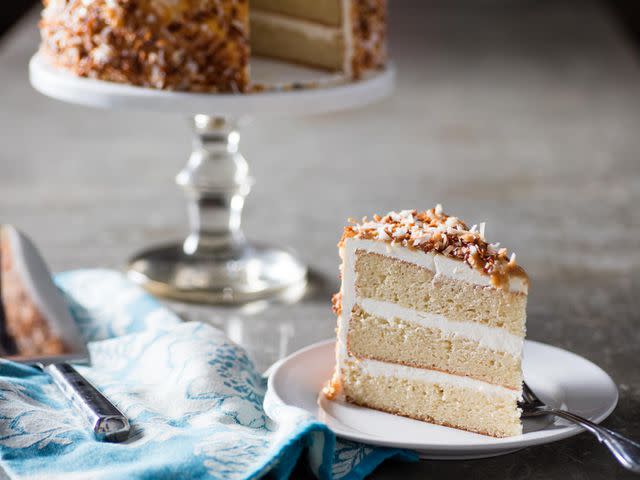
Serious Eats / Vicky Wasik
This is by no means an exhaustive list, and because perceptions of flavor and texture are so subjective, there's no single best temperature for serving a particular food (more on that below). But if you're entertaining a group and want to improve your chances of knocking their socks off—with some planning, but precisely no extra effort, required—consider allowing the following foods to come to room temp before serving:
Many dips, such as salsa, guacamole, and hummus. Despite the online brouhaha, it really is okay to store your fully ripe tomatoes in the refrigerator, as long as you bring them to room temperature before you use them. A salsa that includes raw tomatoes, such as pico de gallo, will consequently also be more flavorful when served at room temperature, even if previously refrigerated. The acid in many salsas—from tomatoes, vinegar, and/or lime juice—also acts as a preservative, helping them stay safe to eat at room temperature for longer.
Guacamole and hummus are both best served immediately after making, but if you're serving store-bought, or if you must chill them for later, let them come to room temperature before serving. Of course, all dips that depend on melted cheese, like fondue or queso, ought to be served fresh and hot.
Cheese should always sit for about an hour outside the fridge before it's served. Soft cheeses, like Brie, need that time to take on their proper half-runny (or fully runny) consistency, but the flavor of even semi-firm or hard cheeses benefits when you take the chill off. Let them sit out too long, though (especially if they're thinly sliced), and they can start to sweat.
Sasha, who managed the cheese program at one of the restaurants where he worked before Serious Eats, reports that before service each night, he'd set out a calculated quantity of cheese, based on the reservation count, in a relatively cool spot well away from busy cooking stations. Follow his lead by slicing up only the cheese you and your guests will eat and keeping it far from the heat of the kitchen.
You don't need us to tell you that baked goods are better at room temperature than they are cold, and best of all hot from the oven. But many people still make the mistake of refrigerating breads, pastries, and cakes for storage, then not letting them return to room temperature before serving.
Refrigeration of baked goods accelerates staling, so it should only be employed to harden the crumb coat on a cake or prepare it for transportation (chilled buttercream will lock the layers of a cake in place, preventing them from sliding back and forth in a moving car), or if you're working on a really fancy wedding cake that will require several hours to decorate. And it can take a very long time to bring a chilled cake back to life so that the butter in it feels smooth and creamy, not waxy and dense; Stella recommends eight to 12 hours for an eight-inch layer cake. Don't mistreat the coconut cake you ushered into this world by serving it cold. Get yourself a nice cake stand, pop a cake dome (or inverted pot or mixing bowl) over that baby, keep it on display where it belongs, and eat it up or give it away within a couple of days.
Not only are pies best unrefrigerated, they shouldn't be stored, period, for longer than necessary, as the crust will slowly absorb moisture and turn soggy. But that's especially true for pumpkin and sweet potato pies, whose heady blends of spices will start to fade over time. The cold temperature of a fridge will only exacerbate that phenomenon.
Chocolate-covered strawberries or truffles. Chocolate is best consumed at temperatures approaching its melting point, which is roughly body temperature; it takes on a waxy feel if it's served much colder than that, and its flavor is dulled.
Foods That Are Better at...Somewhere Just Above or Below Room Temp
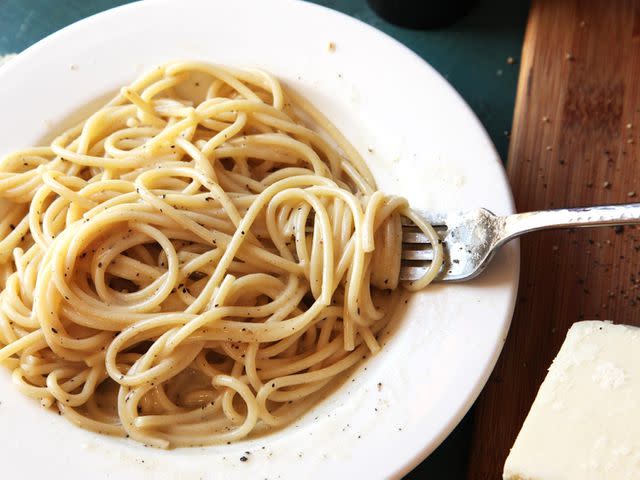
Serious Eats / J. Kenji López-Alt
Serving temperature is a spectrum, not a finite set of distinct categories. Some dishes do better closer to the ends of that spectrum, though not necessarily at the extremes of ice-cold or steaming-hot. To wit:
Many pasta dishes, including carbonara, cacio e pepe, and pesto pasta, shouldn't be served piping-hot, in order to avoid breaking the emulsion that forms the sauce. Aim for a serving temperature you'd describe as "very warm."
As mentioned above, charcuterie and salumi should be served at slightly-cooler-than-room-temp, so the fat doesn't melt as they sit out.
Raw fish, whether in the form of sashimi, poke, or aguachile, should be stored at very cold temperatures to ensure food safety and longevity, but for the best texture, don't serve it ice-cold.
Because levels of bacterial growth depend on both temperature and time, you can keep some raw fish above fridge-level temps for a short period with little risk. If you're feeling ambitious, check out table A-2 in this document from the FDA, which lists how long fish can be held in various temperature ranges before dangerous bacteria begin to multiply. Your best protection against getting sick from raw fish is to buy it as fresh as possible and store it as cold as possible.
Science Isn't Everything
I've mentioned this twice already, once obliquely and once directly, and the sketchiness of some of the research I've cited goes some way toward underscoring the point. But just to eliminate any doubt: Taste is highly subjective, so the "ideal" serving temperature for a given food will always be subjective, too. Our cultures, traditions, and individual habits play at least as significant a role as science does. In the US, for instance, it's customary to eat cooked vegetable dishes hot, but in Mediterranean countries, wilted greens and braised artichokes, among other dishes, are often served at room temperature. You may try that out and decide it's not for you. But recognizing that it's a possibility means expanding your culinary repertoire—potentially finding along the way that the flavor of some of your favorite dishes actually improves—and that can't be a bad thing.
June 2019

